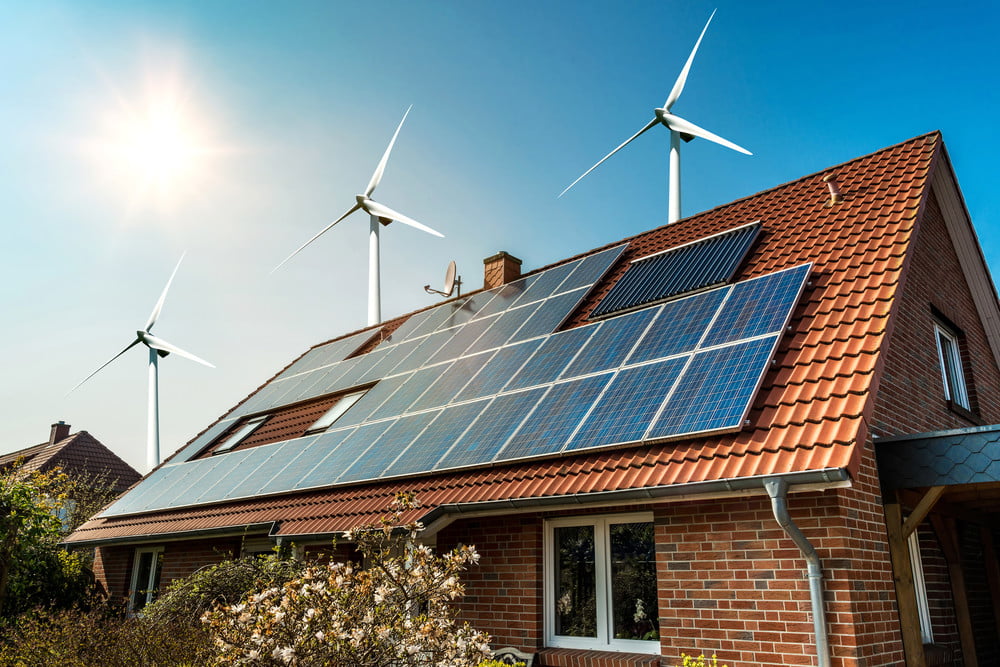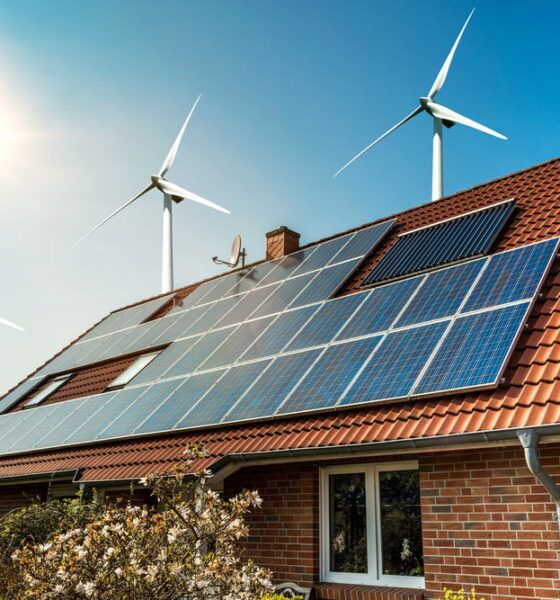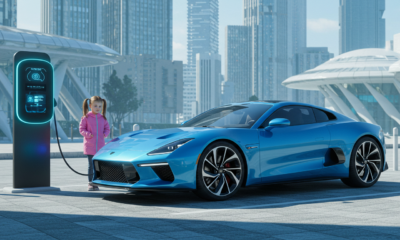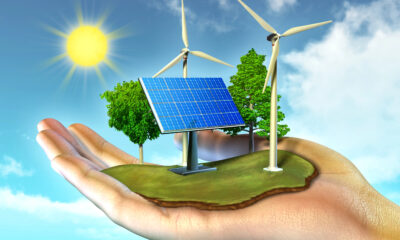

Editors Choice
6 Ways To Use Renewable Energy To Increase Your Home’s Value
Redesigning your home is both an aesthetic and monetary endeavor. You want your space to look great, and you also want to see your property value increase. Every home improvement you make should raise your home’s value or add marketability. You’ll earn more money as its worth increases, and the house will become invaluable to the next owners. A house with competitive, useful features will sell for higher than a place without them.
Adopting renewable energy is a valuable way to do this, especially amid growing concern for the environment. People are interested in clean living and want their houses to reflect this. Renewables reduce your reliance on the energy grid, which means less coal-based power. They also contribute to lower bills, which most homeowners are eager to have.
The possibilities of sustainable home design are vast. Here are six ways to implement renewable energy within your property.
1. Roof Solar Panels
Adding solar panels to your roof can bump up your home value depending on what city you live in. Solar homes experience a value bump of 4.1%, which is $9,274 for a median-valued home. The percentages vary across metro areas, with New York exhibiting a higher property value increase than Riverside, California.
Numerous factors determine how much value solar PV can bring your property. A shady, tree-laden area wouldn’t be the best place to install them, nor would they fit on a roof without the appropriate structure. One of the primary points of implementing solar PV is ensuring your house can accommodate large panels. If not, a ground-mounted system is a viable alternative.
2. Smart Technology
Use smart technology alongside solar PV or other renewable sources to reduce your energy usage. For example, Wi-Fi temperature sensors collect data on the humidity and temp within your home. They transmit information to a cloud storage system, which you can access by smartphone, tablet or computer. Receiving these updates can help you control your home’s interior and prevent energy wastage through unnecessary heating or cooling.
Many home buyers and real estate agents’ value smart technology because of its convenience and advanced components. A 2017 survey from T3 Sixty revealed 78.8% of respondents were willing to pay more for a smart home. It helps you save money, and it fits perfectly into today’s tech-based world.
3. Geothermal Heat Pump
A geothermal heat pump takes heat from below the Earth’s surface and transfers it to your home. Alternatively, it can take heat from your home and transport it underground like a cooling system. This process can take the place of a regular HVAC unit for less money and maintenance. You don’t need to live in a hot climate to install one, either. They always have a constant source of heat because they absorb it from the Earth’s surface.
Have a land surveyor inspect your property to decide which type of ground loop is best — open or closed. Various loops exist, with three of them closed and the fourth open. Geothermal pump installation requires extensive knowledge and experience, and it’s best to hire a professional to handle the job.
4. Wind Turbines
Wind turbines come in smaller sizes than the huge ones you’re used to seeing, which is ideal for residential installation. Harnessing wind energy is best if you live in a rural area with no large obstructions. The wind turbine should be the tallest structure around with nothing else in the way to interfere with the spinning blades. Hosting wind power for an energy developer helps you earn money from installing a turbine on your property, and there’s no financial risk.
If you don’t have room to install a turbine, you can partner with others on a wind project and share ownership.
5. Better Home Design
Your home design matters as much as the renewable energy you use to power it. A well-ventilated, insulated house doesn’t require as much heating or cooling as one without a proper HVAC system. You may end up installing larger windows to let more air in — or keep it out — and adding more insulation to nooks and crannies. Spending money on renewable power won’t be as effective if you don’t address insulation and ventilation first. Otherwise, your bills will stay high from air infiltration and high HVAC usage.
Inspect your attic, basement, windows and air vents for problem areas. Plug up any holes or gaps that leak air, and change your regular windowpanes for low-e ones. These can enhance the energy-saving effects of a geothermal pump or Wi-Fi temperature sensor.
6. Microhydropower
Hydropower is less common in residential homes, but it’s a good investment if you live near a flowing body of water and have a large house. Residential types are known as microhydropower systems and can generate up to 100 kilowatts of electricity. A typical setup includes a turbine or waterwheel, a generator and a water conveyance. Your hydropower system can be on or off the grid, though an off-grid arrangement requires batteries for electricity storage.
Greening Your Home with Renewables
Increase your home’s value by adding features that embody sustainability. House renovations provide the highest ROI when they’re both aesthetically pleasing and useful. By factoring energy conservation into your property design, you’ll live greener and sell your house for a better value.


 Environment10 months ago
Environment10 months agoAre Polymer Banknotes: an Eco-Friendly Trend or a Groundswell?

 Environment11 months ago
Environment11 months agoEco-Friendly Home Improvements: Top 7 Upgrades for 2025

 Features9 months ago
Features9 months agoEco-Friendly Cryptocurrencies: Sustainable Investment Choices

 Features10 months ago
Features10 months agoEco-Friendly Crypto Traders Must Find the Right Exchange






























